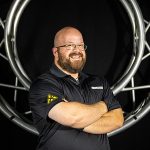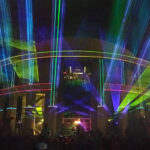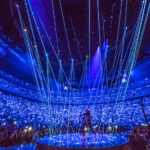X-Laser Focuses on Lighting Designers and Console Integration
We’ve come a very long way in a short amount of time in the entertainment lighting industry with respect to technology, whether it be lighting data communications and protocols, automated lighting and its specific technological advancements, or even LED fixtures and technology. The game is constantly being changed in one way or another, usually by a company who comes out with a specific product or technological advancement, or by a designer who uses a particular piece of technology in a unique way that enhances the critical WOW factor.
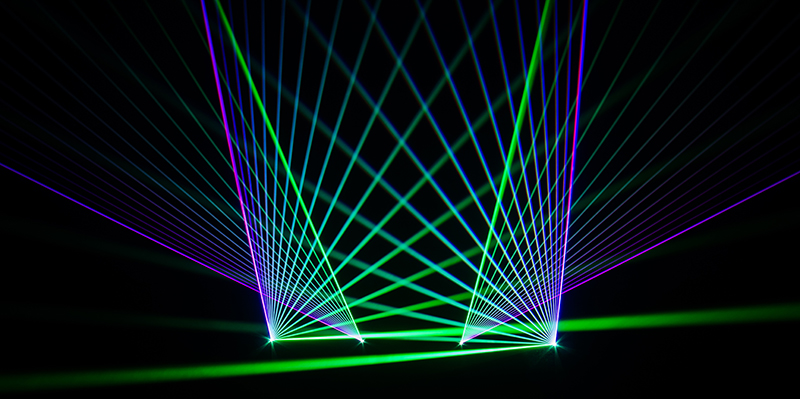
In the case of product advancements in lighting, we can look many ways due to the amount of growth that has happened in such a short timeline: Vari-Lite introduced fixtures that could move and change colors and gobos to replace a single-source PAR unit or stationary ellipsoidal unit, which increased the fun factor not only for the audience, but for the designers as well. They developed the first and consecutive rounds of automated lighting that improved drastically, from spots (VL1, VL2, VL6) to washes (VL4 and VL5), to which VL5 is still one of the most widely used wash fixtures on earth across several genres of design and implementation. This gave rise to companies like High End Systems, Morpheus, Coemar, Claypaky, SGM, GLP and a bevy of other brands that all helped to produce and advance automated lighting to the state it’s in today.
Within that growth came internal technological advancements, many in simple form and function — for example, we had LED wash fixtures on the market years before (technically called “pixelation luminaires”) named ShowPix, that were actually hybrid LED wash moving heads with individual pixel control. Those particular products were so advanced for its time that consoles ran out of universes using large groups of them, which in turn advanced console specifications to fit the needs of the fixtures that were coming out. Even the front of the fixtures and the beam have changed drastically over a handful of years as both technology improved and designer demand changed, with Claypaky introducing the Sharpy luminaire and its tiny aperture and front glass. Production Resource Group (PRG) then introduced the Bad Boy (and later the Best Boy 4000/Best Boy HP) to the industry with its large bright beam, large diameter front glass, and enormous zoom range. The industry is constantly changing in both form and function, and it will remain in that constant state of flux for years to come as we advance technology.
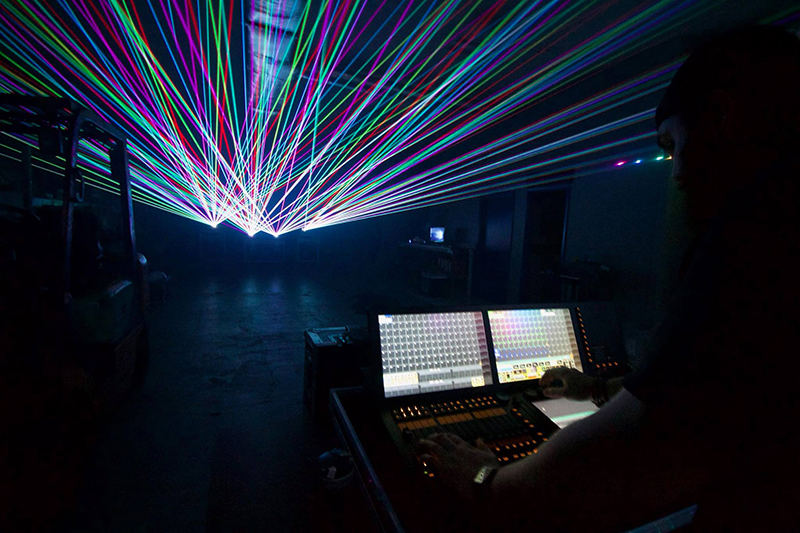
The Laser Status Quo
One place that we as an industry have dabbled in over the years with varied success is the field of producing laser-based luminaires and effects, mostly considered effects by designers and manufacturers in our industry. Laser equipment has gone in two directions: the small packaged laser effect projectors, often the size of either a pack of index cards or a ream of printer paper, offering either a single beam gag shining through a diffraction grating to create a “star field” grid, or perhaps a set amount of small, low resolution images or logos and some X-Y motion that can be controlled via a laptop or preset from the device itself. The opposite side of that to date has been the high wattage, high maintenance, expensive level of laser equipment that was used to create large-scale laser shows and effects, requiring a team of people to maintain and operate, with proprietary control, and with a limited set of interactions between designers and operators. This just isn’t acceptable to accepting a product category into the Entertainment Industry; media servers also went through a growth period like this, but as lighting designers and programmers worked together with video designers and programmers, the media server world exploded into what it happens to be today, which is a very large percentage of shows utilizing media servers in a major capacity all across the genres of Entertainment Lighting that we know as modern production.

The Rise of Coherent Light in Entertainment
A laser company out of Laurel, Maryland has been constantly introducing laser fixtures to the Entertainment Lighting industry for the last decade, and has been a changing factor in how the designers and productions of the world see coherent light. X-Laser USA has taken the idea of laser effect generators and merged it into thinking about laser products as laser luminaires. Their foresight into the future of lasers into production is changing the game of how lasers fit into the modern production design model, allowing lighting designers and programmers to interact directly with the equipment, which is how the industry works with its current technology. Media servers went through the same iterations; the console is the main level of control and in essence, it functions like a moving light. X-Laser USA has adapted its technology to function like everything else that operates via the console, and this has allowed adaptation of the thinking of lasers to be considered “laser fixtures.”
Company president Adam Raugh comes from a place that is perfect for this adaptation of understanding laser products, and has been able to help change the thinking towards laser equipment as devices that react to your design choices, rather than designers adapting to how the device operates. Raugh’s background is theatrical, and his engineering knowledge of lasers combined with the understanding of how productions function has allowed X-Laser USA to transcend the traditional thinking of lasers in the marketplace.
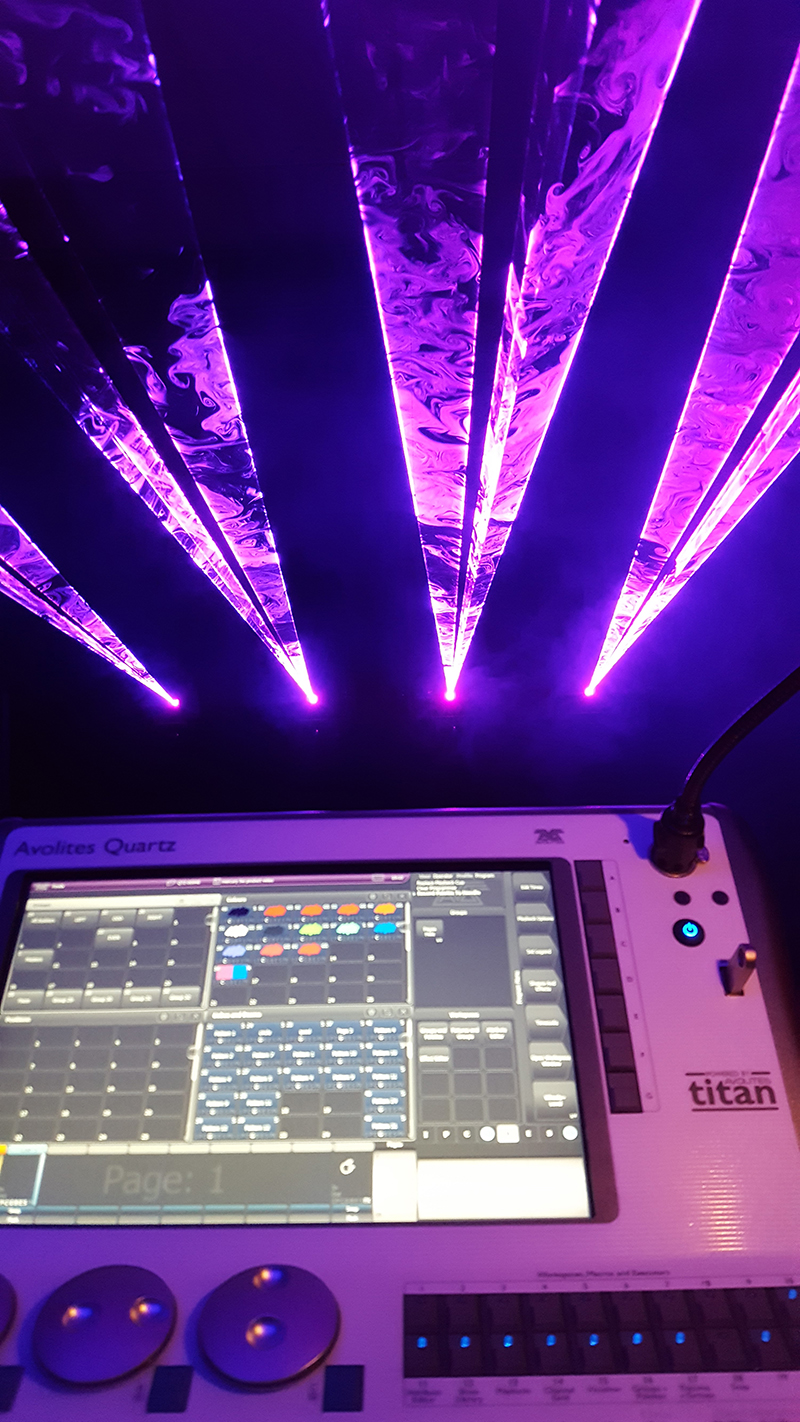
“One place we thought was very much lacking in the field was the competition of laser companies with their own customers,” says Raugh. “One thing we do not do is compete with our clients. Many laser companies will provide laser solutions to their clients, but also bid on laser projects with their own equipment. Many companies worldwide have entire production wings attached to their companies, and when a client comes to them asking about laser gear and fixtures, that job ends up getting snaked away from the client by the manufacturer. We find this to be faulty thinking, which is why we don’t do it. We make laser fixtures for the industries; we sell them to our customers and we rent them to major tours all over the world, but we’re not in the business of putting our customers out of business. Listening to the market and how it lives and breathes is the major pulse of X-Laser USA.”
Historically, laser equipment has been controlled by secondary software — companies like Pangolin, for example, put out control software that is widely used to make shows comprised of movements, images and color changes. X-Laser USA has gone a step further by understanding how the industry’s lighting designers and programmers think, how they want to operate and create their shows. “One thing that we’ve done with vast success in our development is to bring lighting designers and lighting programmers into the offices and had them look at what we have created, and how it functions with what they want to have happen when they cue up a laser fixture,” Raugh says. “What we have found is that, 15 minutes into showing a lighting designer how our equipment functions, they push us out of the way and say ‘Okay, I have got to get in front of this now and drive, I gotta see what else this can do,’ which is exactly what we want to have happen. When the designers want to create on their own, using the laser like any lighting fixture they’re used to using, we feel we are servicing our clients most effectively.”
In addition to working with lighting designers and lighting programmers, X-Laser’s team has gone directly to console manufacturers to get input on not only how to most effectively interface the lasers from the console, but how to better develop the lasers to fit with the needs of not only the manufacturers of the consoles, but their users as well. “Avolites has been a huge help to us in not only development, but interaction with designers and developers,” says Raugh. “Since the beginning of that relationship we have had nothing but positive experiences working directly with Avolites, and they’ve helped us to better serve the lighting community by showing us the best ways to make our laser fixtures accessible to consoles across the spectrum and giving programmers access to the functions of the fixture versus telling them what functions will be available. They’ve helped us not only develop the profile for the fixture across the spectrum, but also helped with ideas on how to improve the system; they put us in touch with a few designers that also helped refine the system so that it made sense on a designer level. This is paramount to creativity in lighting design and programming.”
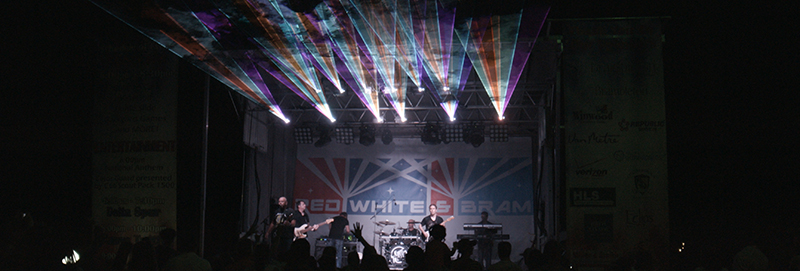
Streamlining the FDA Variance Process
In the world of lasers in production, there is a health and safety aspect to laser usage and deployment that all users must go through, called a Laser Variance. One thing about lasers that many people don’t understand is that the Food and Drug Administration governs the use of laser equipment in America, and using lasers in productions isn’t something that you can just do without repercussion. Just like shining a Sharpy directly into your eye is not recommended, shining even a pen laser directly into your eye is not recommended, and the same principle applies with larger scale laser fixtures of any brand or company. Because of this, the FDA requires you to go through a process of receiving some special permission to use lasers on production. However, from the times of the beginnings of using lasers for entertainment, the process has changed, and one of the reasons for this change is that X-Laser USA has made the ability for a user or production to get a Variance into a 15-minute process for most applications.
This goes against the general attitude for “laser people” having to struggle through miles of red tape to put some lasers on a show. “One thing we take pride in is that we don’t make lasers just for laser people,” Raugh says. “In fact, we’re not that particularly well-liked among the die-hard old-school laser folk because we have made using lasers in productions and designs vastly easier than it ever has been in the past. Just recently, as a matter of fact, someone posted online that ‘getting a laser variance used to mean something, but now it’s easier than getting a Costco card online.’ I printed that out and I keep that above my desk in my office, because I take that as a huge compliment,” says Raugh.
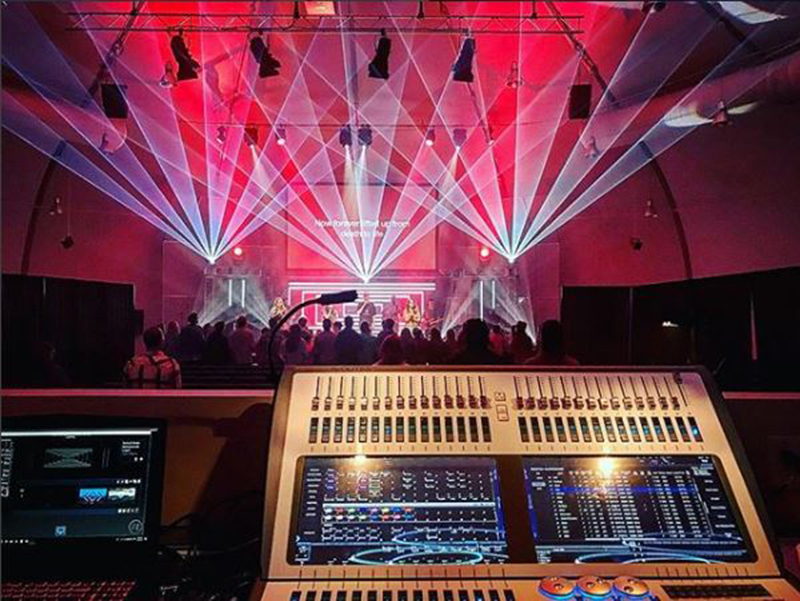
“What that means to us is that we have simplified the process of getting a laser variance and opened up the field of using lasers in production to a bigger audience of people with more of an artistic background. There are designers out there doing absolutely incredible things with new tools when they become available to them; how this has been successful for us is that we have been able to give new tools to a large body of designers that can create exciting new looks and approach using our fixtures in exactly the same way that they do when they are faced with a new moving light.”
In the field of lasers for production, perception is everything. How a designer perceives a fixture’s functionality and features determines how it gets used on a show, or even if it gets used at all. Historically, laser equipment has been difficult at best to communicate with standard lighting consoles. X-Laser’s laser fixtures overcome this perception issue by allowing the designers to work with the units based on parameters no different than moving heads. “When a designer calls up one of our laser fixtures, they just choose the features they want to use, no different than any moving head they might have in their rig — pan, tilt, add a prism, spin a gobo, the same rules apply now,” says Raugh. “We also give them some additional features that moving lights don’t have, which adds to the feature set of the laser fixture, like gradient color movements that emanate from the center of the beam, linear bands that cut through a pattern, or the ability to move color from one side of the bean to the other without moving the pattern. This is just the tip of the iceberg.”
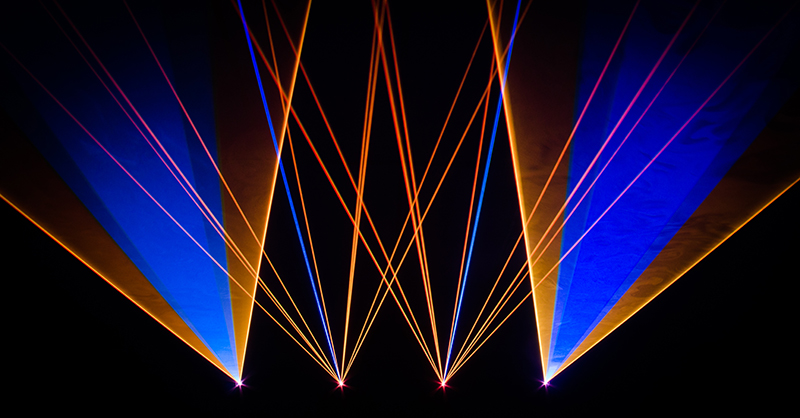
A great description of X-Laser USA’s modus operandi is printed on their website, and I’ve always found this to be one of the more accurate, true-to-form with no BS descriptions of a company in our vast industry with the fortitude to back it up: “X-Laser is a U.S.-based, and FDA-varianced, non-ionizing radiation system developer and integrator. That is a fancy way of saying that we develop and manufacture some of the best, most innovative and affordable entertainment, architectural and industrial laser projectors in the world. We work with dozens of firms spread across the globe that specialize in a wide array of disciplines; from optics and diodes, to millwork and circuit boards. We take the best solutions and technology we can find, along with the technologies we invent ourselves, and combine them into both stock and custom built laser products which deliver the best performance/cost and ROI ratios in the world. We are also a family company which stands behind every unit we make and strives to provide the most responsive customer service in the industry. All of these factors, along with unique United States FDA compliance procedures, have come together to make us, by far, the most popular high powered entertainment laser manufacturer in North America. Delivering more new high powered laser systems than all our other competitors combined. Having added industrial laser offerings to our product portfolio and extensive R&D capabilities, X-Laser stands alone ready to make pretty much whatever you can dream up.”
We have so many different forms of light available to us in this industry — from LED sources to discharge output fixtures, projectors and even fixtures using fire. X-Laser USA is giving the industry the ability for the first time in a long time the usage of one of the most striking light sources, and making it as common and easy to use as a moving light.
For more information about X-Laser USA, go to www.x-laser.us.
